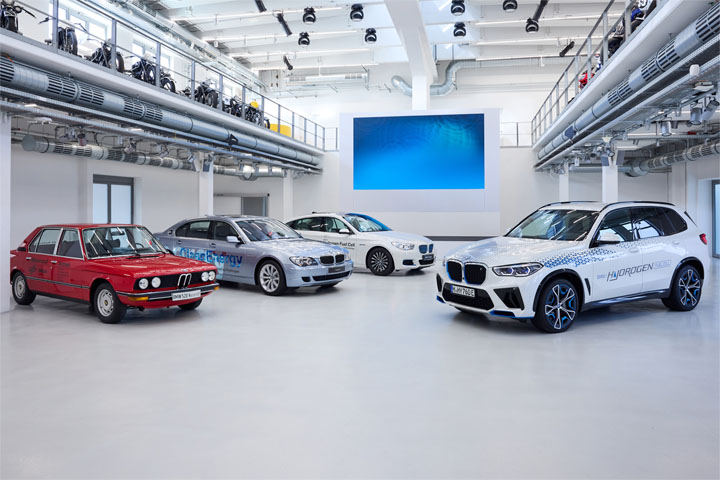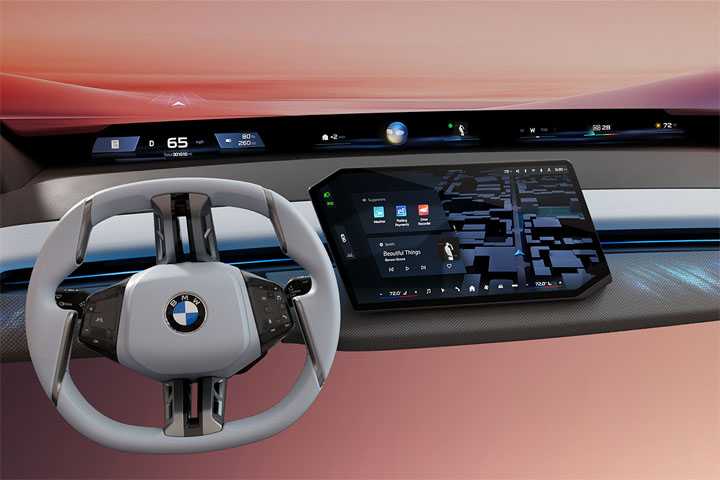In the “WEffect” sustainability series, the BMW Group highlights the sustainable contribution made by a wide range of people in the company – and the motivation that inspires them. Today: Peter Tarne.
Sustainability has many facets at the BMW Group because we are using this term to harmonise business, the environment and society. If we are to successfully put these high standards into practice, we need our employees’ commitment. Everyone can play their part in making the BMW Group sustainable.
So, who are all these colleagues who make sustainability part of their everyday work? What drives them to roll up their sleeves throughout the company? In the new “WEffect” sustainability series, the BMW Group introduces employees who play their daily part in the broad and responsible further development of our company.
In this episode of the series, Peter Tarne, Life Cycle Assessment and Life Cycle Analysis Specialist in Vehicle Development at the BMW Group, explains how a product minimises its ecological footprint.

Peter Tarne, until a few years ago, a vehicle’s environmental friendliness was benchmarked by its fuel consumption and exhaust emissions. Today, everyone talks about life cycle and life cycle assessment. What can you tell us about that?
Peter Tarne: Everything! In the past it was mostly a question of how much CO2 or how much nitrogen a vehicle produces when driven. Today, though, we look at the product in its entirety. We keep the footprint in mind ‘from cradle to grave’, as they say, to include all elements of production, as well as recycling. So we examine how much energy is consumed at each step, how much CO2 equivalent is produced, and so on. We can draw up this footprint assessment for the entire vehicle, but we can also do it for individual components. Or for certain types of use, such as car sharing.
This means then that you can show how a product affects the climate – and whether it is an improvement on its predecessor. You studied environmental engineering, and also did a doctorate on the expansion of life cycle assessments. How did you come to specialise in this topic?
Tarne: I was already wrestling with the issue of how to make my own personal contribution to protecting the environment – that is, technically and on the engineering side – at an early stage. The trigger was actually a trip to New Zealand after I graduated from high school. I noticed a stretch of land there that looked completely unnatural and was covered in nothing but conifers. It looked so different from the otherwise beautiful, natural and varied landscape. I asked around and learned that very fast-growing conifers were grown there to be processed into chipboard in China. It then often ends up as material for furniture, a lot of it used by us in Europe. A trip right around the world! After a few years, the soil where the conifers grow gets so over-acidified that the only thing that grows on it is grass. At the time I thought: this can’t be right! How come people know about this, yet do nothing about it? But it also made me realise that I had to do something about it myself. That’s why I started studying environmental engineering. I wanted to do something, but in my own way. Sustainability has three big branches to it: environment, society and economy. In the past, I have often asked myself how it is possible to do something about strengthening sustainability in all three areas while still earning a living. Choosing the right profession certainly helps. My goal is quite simple: I want to contribute to a better world with my work.

That’s definitely something that can be easier said than done. Where are the stumbling blocks on your way?
Tarne: In day-to-day working life, the main enemy is time. Until recently, the life cycle was just one among a number of characteristics that were in the mix when making vehicle development decisions. Design, cost, there are so many aspects. But now the focus is purely on sustainability. Everyone wants life cycle analyses! We get full support from our hierarchy, and that’s something we definitely can’t complain about. Nevertheless, getting the analyses processed on time is a challenge. The analyses are very complex, yet we are expected to come up with the target values very quickly. Process innovations can help here. The analyses could be requested earlier and this would prevent time being wasted at the interfaces. Not all steps have been clearly defined yet as regards the overall goal; we are still working on some. How much exactly we need to reduce our CO2 footprint in order to know the Paris climate agreement, we already know. However, the prompt, detailed calculation and control of the total CO2 footprints of all vehicles in our current and future fleet is still a technical challenge that we are currently working on.
If you are forever asking yourself these questions when things aren’t going so well or get frustrating: what spurs you on to keep the momentum moving forward each new day?
Tarne: We work really well together as a team and have a lot of fun. That makes it easier and in itself is a great help. My personal motivation also drives me: if this works, when we get it right, we are playing a very active part in helping to preserve the planet. We take any action and do whatever we can to prevent the climate from becoming even more unstable.
Are you already seeing successes?
Tarne: Our results have already brought about a lot of change to the vehicle, even before the heightened focus on the CO2 issue. The BMW Group has already started calculating life cycle assessments for the BMW i3 – and that was a few years ago. However, society is now only partly beginning to wake up to the necessity. I sometimes feel a little disheartened by that, although I do have to remind myself I have much more of a sharper focus on it than the average person. It is second nature for me to keep an eye on the life cycle of a product. All the time! So what I see as the basics are in fact not so self-evident for others. This means I have to educate, communicate differently and more simply.

So when is it good enough?
Tarne: It’s good enough when I feel that I am delivering more positive than negative effects through my work. If I can reduce the carbon footprint of our society, then it’s good.
In the upcoming portraits from our “WEffect” sustainability series, committed colleagues will also describe their motivation and explain the contribution they are making to sustainability within the BMW Group.






